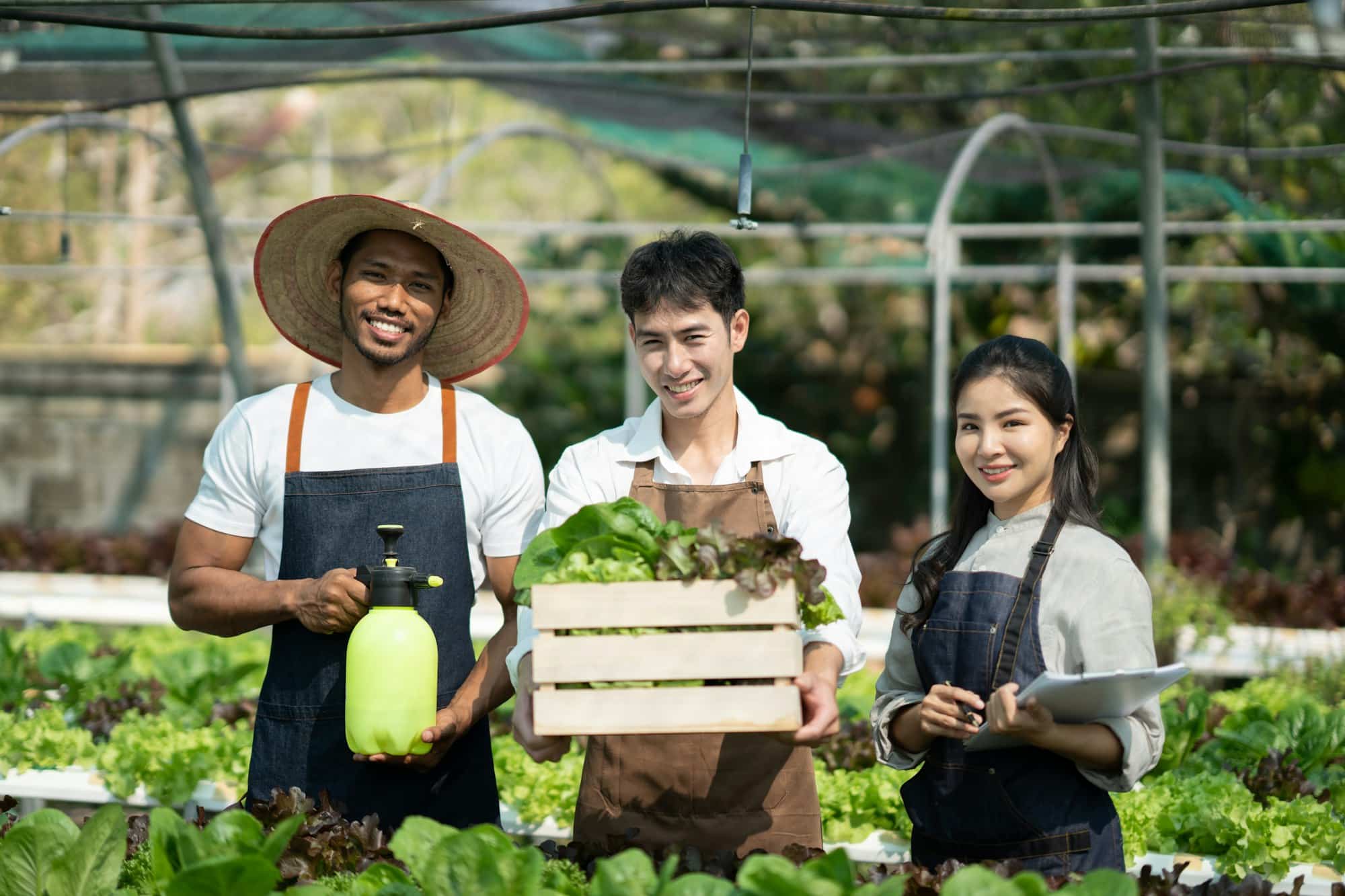Plants have a remarkable place in our lives. They provide the oxygen we breathe, food we eat, and a sense of aesthetic pleasure. But, how often have you felt the urge to cultivate fresh lettuce in your indoor garden? If the idea of growing your own food excites you, then you’re not alone. With the advent of hydroponic systems, indoor gardening has become a practical dream. Today, we shall delve into the world of vertical hydroponic gardening, a space-efficient approach to indoor farming that allows you to grow plants without soil, using nutrient-rich water solutions.
Understanding Hydroponic Systems
Before we dive into setting up a vertical hydroponic garden, let’s first understand what a hydroponic system is. Simply put, hydroponics is a method of growing plants without soil. Instead, you use mineral nutrient solutions in a water solvent. This method provides plants with a direct supply of water and nutrients, making it easier for them to grow.
Cela peut vous intéresser : What Are the Best Compact Appliances for a Studio Apartment Kitchen?
Hydroponic gardening has several advantages. Apart from saving water, it also eliminates the need for large farming spaces. Moreover, with hydroponics, you can grow plants at any time of the year, providing a consistent food supply.
The Vertical Approach to Hydroponic Gardening
The concept of vertical farming is simple. Instead of spreading your garden horizontally across a large area, you stack it upwards. This is particularly beneficial for indoor gardens where space is often limited. A vertical hydroponic system allows you to maximize your gardening space by growing plants in towering columns.
Dans le meme genre : How Can You Create an Allergen-Free Zone in a Home with Pets Using Air Filtration?
Vertical hydroponic systems also offer the advantage of equal light distribution. When plants are stacked vertically, each plant receives an equal amount of light, thereby boosting their growth. These systems are suitable for a range of plants, but most people prefer growing leafy vegetables like lettuce due to their small root systems and fast growth rates.
Setting Up Your Vertical Hydroponic Garden
Establishing a vertical hydroponic garden indoors requires careful planning. The first step is to choose the right location. It should be a space that can accommodate your vertical setup and receive adequate light. If natural light is insufficient, you can supplement it with artificial grow lights.
Next, choose the hydroponic system that suits your needs. There are several types of systems available, including nutrient film technique (NFT), deep water culture (DWC), and aeroponics. Each system has its own set of advantages and is suitable for growing different types of plants.
Lastly, select the plants you wish to grow. As previously mentioned, lettuce is commonly grown in vertical hydroponic gardens due to its fast growth rate and small root system. Other good options include herbs like basil and mint, or other leafy greens such as spinach and kale.
Managing Your Hydroponic Garden
After setting up your vertical hydroponic garden, the next step is to manage it effectively. This involves monitoring the water and nutrient solution, maintaining the right temperature and humidity levels, ensuring proper light exposure, and regularly checking for signs of plant diseases and pests.
The nutrient solution plays a crucial role in hydroponic farming. It should contain all the essential macro and microelements needed by plants. The solution’s pH level should also be maintained between 5.5 and 6.5 to facilitate optimal nutrient uptake.
Light is another essential factor for plant growth. If your garden doesn’t receive enough natural light, consider installing grow lights. These lights come in different types, including fluorescent, LED, and HID lamps. Choose the one that best suits your plants’ requirements.
The Future of Indoor Gardening
With advancing technology and increasing environmental concerns, vertical hydroponic gardening is shaping the future of indoor farming. It offers a sustainable, space-efficient, and climate-independent way to grow food indoors, transforming the way we perceive food cultivation.
Vertical hydroponic systems are also gaining popularity amongst urban dwellers, who often face space constraints. These systems allow them to grow their own food without the need for a backyard or garden. Additionally, the system’s water-saving feature makes them an eco-friendly choice in regions with water scarcity.
In conclusion, setting up a vertical hydroponic garden indoors is not just a hobby, it’s a step towards sustainable living. It allows you to grow fresh and healthy food all year round, while also contributing positively to the environment. So why wait? Start your vertical hydroponic garden today and enjoy fresh salads year-round.
Advancing Your Hydroponic Garden with Technology
As technology continues to advance, it’s playing a significant role in indoor gardening, particularly in vertical hydroponic systems. Various high-tech tools and equipment can enhance the efficiency of your hydroponic garden, ensuring optimal growth and production of your leafy greens all year round.
One essential piece of technology you might consider is an automated nutrient dosing system. This device can measure the nutrient solution’s pH and electrical conductivity (EC) levels in real-time and adjust them accordingly. This eliminates the need for manual testing and constant monitoring, saving time and ensuring that your plants receive the optimal nutrient levels.
Furthermore, you may integrate grow lights into your vertical farm. These lights are specially designed to mimic the sun’s spectrum and provide the correct wavelengths needed for photosynthesis. There are various types of grow lights, including fluorescent, LED, and HID lamps. Your choice will depend on your plants’ needs, your budget, and your energy efficiency goals.
Another technological advancement in the realm of vertical farming is the use of IoT (Internet of Things) devices. These devices allow you to monitor and control your garden’s conditions from your smartphone or computer. This way, you can keep an eye on temperature, humidity, light levels, and other critical factors, even when you’re not physically present in the garden.
Lastly, some innovative indoor gardeners are using AI technology, such as the click grow system. This technology uses sensors and smart soil to ensure your plants get exactly what they need, when they need it. This can make it easier for beginners and those who don’t have a lot of time to devote to their garden.
Reaping the Benefits of Your Hydroponic Lettuce
Cultivating your own indoor food, especially leafy greens like hydroponic lettuce, can be incredibly rewarding. Not only does it provide you with a year-round supply of fresh vegetables, but it also opens up a world of lettuce varieties to explore. From romaine and iceberg to arugula and spinach, you can experiment with different types and discover your favorite.
Besides, growing plants in your indoor garden can have numerous health benefits. Plants are known to improve air quality by absorbing carbon dioxide and releasing oxygen. They can also increase humidity, which can be beneficial in dry climates or during winter. Additionally, tending to plants can be therapeutic and help reduce stress.
Moreover, hydroponic gardening is an excellent way to teach children about the importance of sustainable living. With the hands-on experience of nurturing a plant from seed to harvest, they can learn about the life cycle of plants, the importance of nutrition, and the role of technology in modern farming.
Conclusion
Vertical hydroponic gardening offers anyone the amazing opportunity to grow food in their own home, regardless of the season or outdoor space availability. With the incorporation of technology, managing your indoor garden has never been easier. So, whether you’re an urban dweller squeezed for outdoor space or someone who just enjoys the idea of growing their own food, setting up a vertical hydroponic garden can be a rewarding and sustainable choice. So don’t hesitate, get your net pot ready, and start your journey into hydroponic gardening. You’ll soon be enjoying fresh salads year-round, knowing you’ve taken a positive step towards sustainable living.











